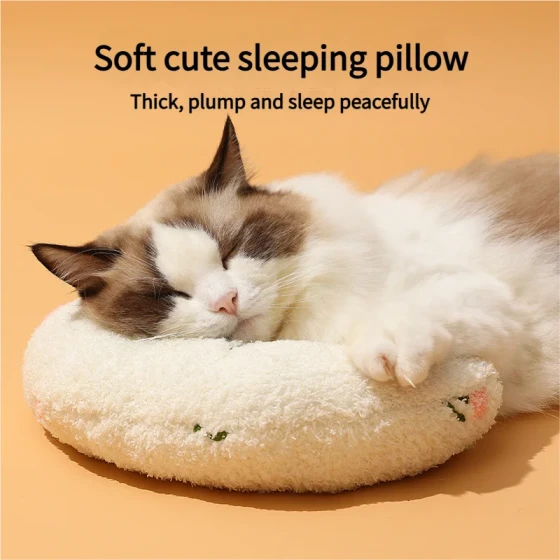Cats Making Purring Sounds_The Mystery and Health of Purring
The most healing moment when petting a cat is probably when the furry ball curls up like a loaf of bread, and the little motor-like purring sound rolls out of its throat. Many people think this is just "the master is in a good mood today," but after raising cats for a while, you’ll find that a cat’s purr is far more complex than a human’s WeChat emoji. It might be a safety password from kittenhood, a self-soothing emotional regulation technique, or even a cat “reverse charging” you with sound waves.
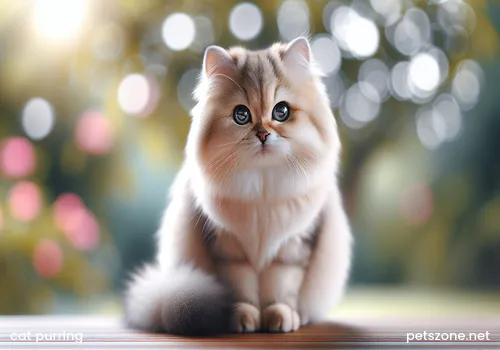
1. The underlying logic of purring: not a “sore throat,” but a “muscle dance”
To understand a cat’s purr, we first need to break a misconception: it is not passive vocalization like human snoring, but an actively controlled “sound wave production” by the cat. According to research in the Journal of Feline Medicine and Surgery, cats have a pair of special “false vocal cords” (vestibular folds) in their larynx. When breathing, the throat muscles rapidly contract and relax at a frequency of 20-150 times per second, causing the air to vibrate, like rapidly plucking guitar strings with your hand - this is the physical essence of purring.
So strictly speaking, purring is the result of a cat “generating power while breathing,” and they can even purr while eating (don’t ask, just know that cats have better throat muscle control than humans). This also explains why some cats purr when injured or giving birth - as long as breathing continues, this muscular system can work.
2. The "Morse code" of purring: hidden meanings in different situations
If a cat’s purr were a phone notification, its “prompt types” would be far richer than WeChat messages.
1. Happy version: “At this moment I am su—per—comfortable”
The most common situation is when petting a cat. When you scratch its chin, massage the base of its tail, or it kneads your lap, the purring sounds like background music. In this case, the purring usually comes with the “five-part relaxation series”: pupils constricted into thin lines (not the dilated pupils from fear), tail soft like a big brush, claws flexing and extending rhythmically as if kneading, ears slightly perked forward, and whiskers naturally spread and not flattened backwards. The cat uses sound waves to say: “This feeling of safety is like being back in mom cat’s arms nursing as a kitten.”
Here’s a little fact: kittens don’t open their eyes in the first two weeks after birth and rely entirely on their sense of smell and their mother cat’s purring to locate the milk source. The frequency of the mother cat’s purr while nursing (about 26Hz) is close to the kitten’s heartbeat, helping them quickly calm down. So when adult cats purr at you, essentially, they see you as a “mobile mom cat”—which is far more touching than “I graciously allow you to pet me today.”
2. Soothing version: “I’m scared, but I’m trying to stay steady”
Last year, my cat went to the vet for the first time and started purring inside the cat carrier, but the sound was sharper and accompanied by short breaths. At first, I thought it was happy, but later I realized—this is a “stress purr.” Cats will actively purr to regulate their emotions when in unfamiliar environments, encountering other animals, or feeling unwell, similar to humans taking deep breaths or humming when nervous.
This kind of purr usually carries “conflicting signals”: for example, the tail tightly tucked between the legs, ears pinned back but not fully flattened (full flattening signifies extreme fear), slightly dilated pupils, possibly licking lips or frequent swallowing. This purring is more like the cat’s “psychological self-affirmation”: “Though I’m scared, I can handle it; though I’m in pain, I must endure.” Some veterinarians have even observed cats continuing to purr after surgery, perhaps using it as a way to relieve pain.
3. Healing version: “You’re unhappy? I’m here to comfort you”
The warmest is the “reverse soothing” scenario. Once, I was working late until dawn, collapsing on the couch with a sigh. My usually aloof cat suddenly jumped up, rubbed its head against my hand, and made a low purring sound for over ten minutes. Later, I found out cats can sense human emotional changes (they are sensitive to their owner's tone and heart rate). When they notice you are down, they will actively use their purrs to “feed” you a sense of security.
This purr is usually softer, with a lower frequency (about 20-50Hz), accompanied by slow “cat snuggles”: rubbing their face against you, draping their tail over your hand, even gently nudging your chin with their head. It’s like saying: “I don’t speak human language, but my sound waves can recharge you.”
3. The health code of purring: a “health wave” or an “alarm”?
Many don’t know that a cat’s purr actually has “medicinal properties.” Research at North Carolina State University found that the frequency of purring (20-140Hz) falls exactly into the “golden frequency band” that promotes bone growth and soft tissue repair. This might explain why some cats purr continuously after injury—their sound waves may accelerate wound healing. Some pet doctors even speculate that this is a “self-healing mechanism” evolved in felines: wild injured cats can’t get medical treatment, so they aid recovery through purring.
But be cautious, abnormal purring can be a health alert. If a cat’s purr suddenly becomes harsh or hoarse, or is accompanied by the following symptoms, be wary:
- Noticeable belly movement when breathing (normal cats mainly move their chest when breathing)
- Purring mixed with “wheezing” sounds
- Lethargy, quieting down suddenly in cats that usually purr often
- Loss of appetite or refusal to eat
These may indicate respiratory infections (like feline rhinotracheitis), asthma, or more serious heart problems. A friend of mine’s cat was diagnosed with pleural effusion after persistent “wheezing purring,” and timely treatment saved its life.
4. How to distinguish “happy purr” from “sick purr”? Remember the "three-look rule"
To be a qualified cat parent, learn to verify the authenticity of purring:
- Look at the condition: during happy purring, the cat’s body is relaxed, feeling like a warm soft blanket when touched; during sick purring, muscles may be tense, especially in the neck and back (due to labored breathing).
- Look at the rhythm: happy purrs are “continuous long sounds,” like distant ocean waves; stressed or sick purrs tend to be “short, rapid broken sounds” with clear pauses.
- Look at interaction: when happy, if you stop petting, the cat may gently tap you with its paw asking “keep petting”; if sick, the cat may avoid touch or suddenly stop purring (because of pain).
Finally, I want to say, a cat’s purr is never a one-way emotional output. It is a safety feeling engraved in DNA from kittenhood, a survival wisdom to cope with stress, and a cross-species emotional connection. When you learn to understand the “subtext” in these sound waves, you will realize—so-called “raising a cat” is simply two lonely souls speaking their own language: “It’s so good to have you.”
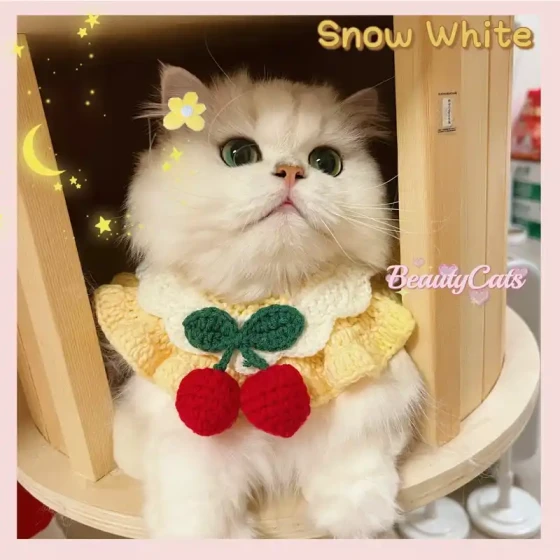
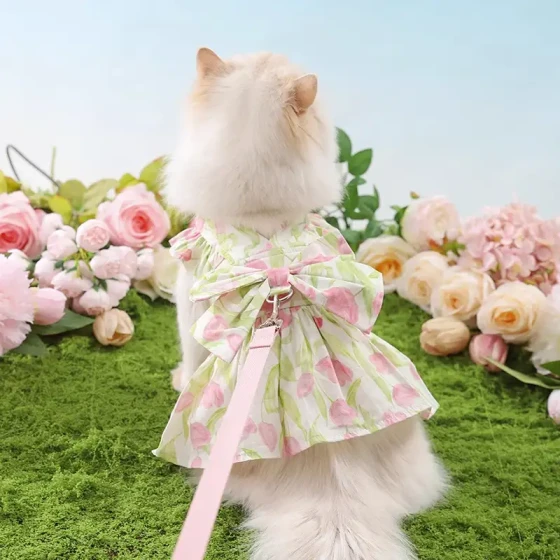
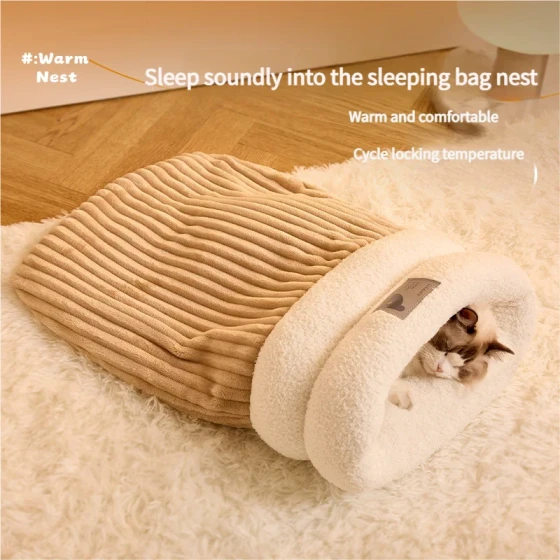
-560x560.webp)
